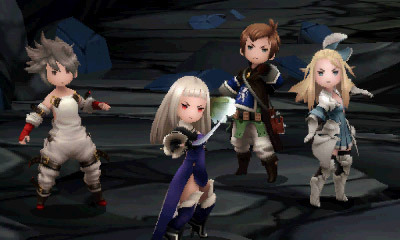How Bravely Second Makes Grinding Less Of A Grind

Like many an RPG fan, I can be a little obsessive compulsive. I like to min-max, finding the best and most efficient combination of skills, abilities, and equipment in order to make my ragtag band of misfit heroes as akin to living weapons of mass destruction as they can be.
Getting the most out of an RPG and making all the pretty numbers go up requires a good bit of grinding: the act of fighting enemy mobs over and over again to get more experience points in order to gain levels. I can fondly recall waking up early before high school every morning in order to get some quality grinding time in with Atlus’ Shin Megami Tensei: Nocturne. I would generally set little goals for myself, such as going up 5 levels before tackling the next boss.
Most RPGs until Square Enix’s Final Fantasy XII used random battles, so grinding necessitated running around in circles waiting for enemies to spawn. Players often had only the smallest degree of control over the RNG-driven nature of these encounters in the form of purchasable items that would lower or increase the frequency of these encounters.
Square Enix’s surprising cult smash Bravely Default gave players more control over their grinding experience than any RPG before it, and its sequel Bravely Second: End Layer expands on that design ethos in a clever way. Bravely Default hands players what feels an awful lot like a dev tool: you can go into a menu and adjust both the random encounter rate and the difficulty, making encounters as easy or as hard as you like and occur at double the rate, not at all, or various shades in between.
Dialing the difficulty down and doubling the encounter rate makes grinding out levels a breeze, and it perfectly suits the portable nature of a 3DS game: you can power up your characters during a commute and then switch the encounters off and make major story headway once you’re in a more quiet spot.
Bravely Second refines things even further. For starters the developers have made tweaking the difficulty and encounter rates even simpler, requiring only a couple of button presses instead of digging through menus. More importantly, though, is the addition of the 1-Turn Victory system. If you wipe out the enemy party in one round, you get the option to continue the fight against a fresh wave with an experience point multiplier (up to 3 times the amount).
It’s a really fantastic quality of life feature that compliments the existing customizability options perfectly. It’s also an interesting turn-based take on Gears of War 2’s wave-based Horde mode, as it requires a careful balancing of resources and making efficient use of the game’s systems to defeat enemies as swiftly as possible.
Even on the easiest setting, wringing the most out of every combat encounter is a fascinating challenge, and all of these systems and design decisions come together to make the RPG genre’s long tradition of grinding a genuinely enjoyable experience. With any luck, designers will take notice and use Bravely Second as inspiration for how to breathe new life into some of gaming’s most well-worn traditions.
